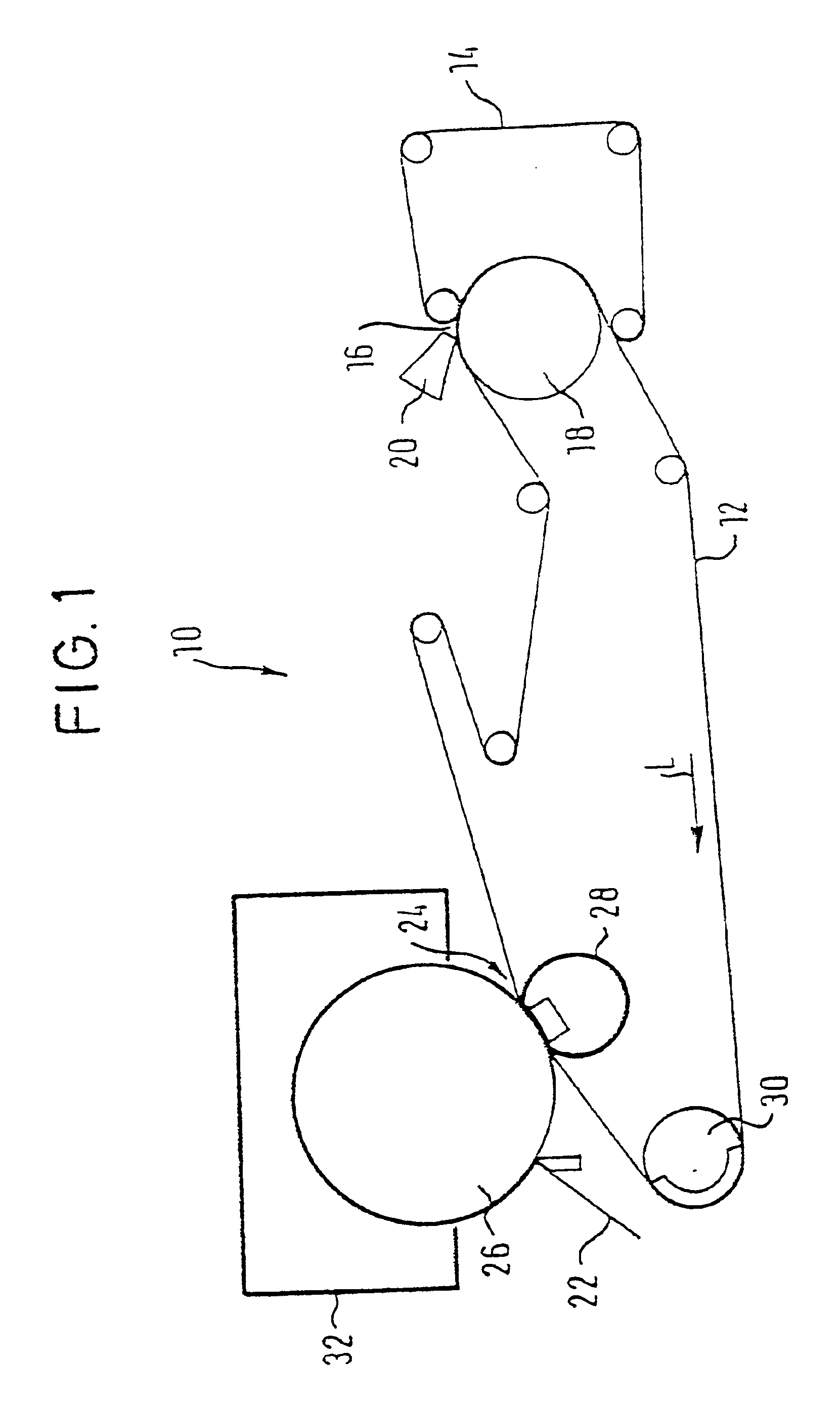Former and process for producing a tissue web
a technology of tissue web and former, which is applied in the direction of papermaking, non-fibrous pulp addition, press section, etc., can solve the problems of loss of quality in the web being produced, runability problems that can also occur in the tissue machine, and counteract the tendency for contamination of the dsp wir
- Summary
- Abstract
- Description
- Claims
- Application Information
AI Technical Summary
Benefits of technology
Problems solved by technology
Method used
Image
Examples
Embodiment Construction
The particulars shown herein are by way of example and for purposes of illustrative discussion of the embodiments of the present invention only and are presented in the cause of providing what is believed to be the most useful and readily understood description of the principles and conceptual aspects of the present invention. In this regard, no attempt is made to show structural details of the present invention in more detail than is necessary for the fundamental understanding of the present invention, the description taken with the drawings making apparent to those skilled in the art how the several forms of the present invention may be embodied in practice.
FIG. 1 shows in schematic representation a crescent former 10 of a machine for producing a tissue web 22. Two circulating continuous dewatering belts 12 and 14 are provided and arranged to converge so as to form a stock inlet nip 16. Belts 12 and 14 are subsequently guided over a forming element which may have the form of a for...
PUM
| Property | Measurement | Unit |
|---|---|---|
| permeability | aaaaa | aaaaa |
| area | aaaaa | aaaaa |
| suction | aaaaa | aaaaa |
Abstract
Description
Claims
Application Information
 Login to View More
Login to View More - R&D
- Intellectual Property
- Life Sciences
- Materials
- Tech Scout
- Unparalleled Data Quality
- Higher Quality Content
- 60% Fewer Hallucinations
Browse by: Latest US Patents, China's latest patents, Technical Efficacy Thesaurus, Application Domain, Technology Topic, Popular Technical Reports.
© 2025 PatSnap. All rights reserved.Legal|Privacy policy|Modern Slavery Act Transparency Statement|Sitemap|About US| Contact US: help@patsnap.com



